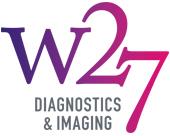Carpal tunnel syndrome is a painful condition that affects the hand and fingers. In this blog we explore what it is, what causes it and how ultrasound guided injections can help.
What is carpal tunnel syndrome?
Carpal tunnel is caused by pressure on the median nerve, which runs from your forearm to your hand. It passes through a narrow passageway in your wrist called the carpal tunnel. The median nerve is responsible for sensations to the palm side of your thumb and fingers, except the little finger, and it also controls the muscles around the base of your thumb.
The nerve can become irritated or squeezed – for example, by swelling or inflammation linked to arthritis or a wrist fracture – causing a band of tissue called the flexor retinaculum to thicken. This can lead to carpal tunnel syndrome.

Symptoms of carpal tunnel syndrome
Carpal tunnel syndrome often begins with relatively mild symptoms which worsen over time. You may experience:
- Numbness or tingling in your thumb, index, middle or ring fingers or a sensation like an electric shock that goes from your wrist up your arm. The symptoms may start to wake you in the night and the numbness may become constant. You may notice your symptoms more when you are holding a phone or gripping a steering wheel.
- Weakness in your hand, due to loss of strength in the muscles that control pinching of the thumb. You may start to drop things.
Causes of carpal tunnel syndrome
Often there may be several different risk factors for carpal tunnel syndrome rather than a single cause. You are most at risk of carpal tunnel syndrome if:
- You have a deformity in the small bones of the wrist. You may have been born with a narrower carpal tunnel than normal or your wrist may become deformed due to a fracture, dislocation or arthritis.
- You are female. Women are more at risk than men, possibly due to the smaller size of the carpal tunnel.
- You have a chronic illness that can cause nerve damage, such as diabetes.
- You have an inflammatory condition like rheumatoid arthritis that can affect the lining around the tendons and cause pressure on the surrounding nerves.
- You are overweight.
- You make repetitive hand movements or use vibrating tools which can put pressure on the median nerve.
Diagnosis of carpal tunnel syndrome
Carpal tunnel syndrome is normally diagnosed using a physical examination to assess the strength of the muscles in your hand and the sensations in your fingers. You may be given an X-ray to rule out a fracture or arthritis or a nerve conduction test to see if electrical impulses are slowed in the carpal tunnel.
How ultrasound guided injections work
Ultrasound guided injections are one of the treatments recommended for carpal tunnel syndrome, alongside anti-inflammatory medication and wrist splinting at night to relieve night-time symptoms of numbness and tingling.
Ultrasound guided injections are injections of corticosteroids into the affected area to relieve pain and inflammation. Ultrasound is used to guide the positioning of the injection, helping to improve accuracy levels from 63-79% without ultrasound to between 90 and 100% with it.
What to expect
The whole treatment takes around 25 minutes from start to finish. You will be asked to sit on a chair next to the ultrasound machine and the radiologist will prepare an injection of corticosteroids to reduce inflammation around the compressed median nerve and anaesthetic to block pain. The skin around your wrist will be cleaned with a sterile solution. Then the ultrasound probe is used to help guide the accuracy of the injection, with the radiologist able to see clearly on the computer monitor where the injection is going. First you will be given an injection of local anaesthetic to numb the skin. Once it is numb you will be given an injection of steroid and anaesthetic around the median nerve in the carpal tunnel.
Afterwards the injection site can feel a bit painful or numb but this will subside quickly. You should keep the site clean and dry and continue to use your hand and wrist normally but without doing heavy exercise for 24-48 hours. You may notice a temporary increase in pain as the anaesthetic wears off but this will settle down. Doing physiotherapy exercises will help you to regain good mobility in your wrist and prevent stiffness.
What difference will it make
Ultrasound guided injections for carpal tunnel syndrome helps to relieve pressure on the median nerve by reducing inflammation and swelling. The treatment is more effective than oral steroids and is quick and non-invasive, which means it carries fewer risks than surgery.
Ultrasound imaging allows the injection can be positioned with greater accuracy than performing the treatment without ultrasound and this helps to ensure you receive maximum benefit from the steroids. Because ultrasound uses soundwaves rather than radiation it is a very safe treatment.
How can I find out more?
If you have been diagnosed with carpal tunnel syndrome and would like to find out more about ultrasound guided injections, contact W27 for more information.
ULTRASOUND GUIDED INJECTIONS | MANCHESTER, WIGAN, CHESHIRE + MORE
W27 provides fast, accurate diagnosis of musculoskeletal symptoms and conditions using the latest state-of-the-art imaging facilities.
For your appointment there is a choice of locations:
The John Charnley Wing, Wrightington Hospital – Hall Lane, Appley Bridge, Wigan, WN6 9EP
HCA Manchester Institute of Health & Performance – 299 Alan Turing Way, Manchester, M11 3BS
Euxton Hall Hospital – Wigan Road, Euxton, Chorley, PR7 6DY
The Spire Manchester – 170 Barlow Moor Road, Didsbury, Manchester, M20 2AF
Harley Street Musculoskeletal Clinic – 136 Harley Street, London, W1G 7JZ
The OrthTeam Centre Ohm Building – 168 Barlow Moor Road, Manchester, M20 2AF
Information about our Fees can be found here.
If you have any questions or would like to discuss your options with a specialist, please contact the team to book an initial consultation.











